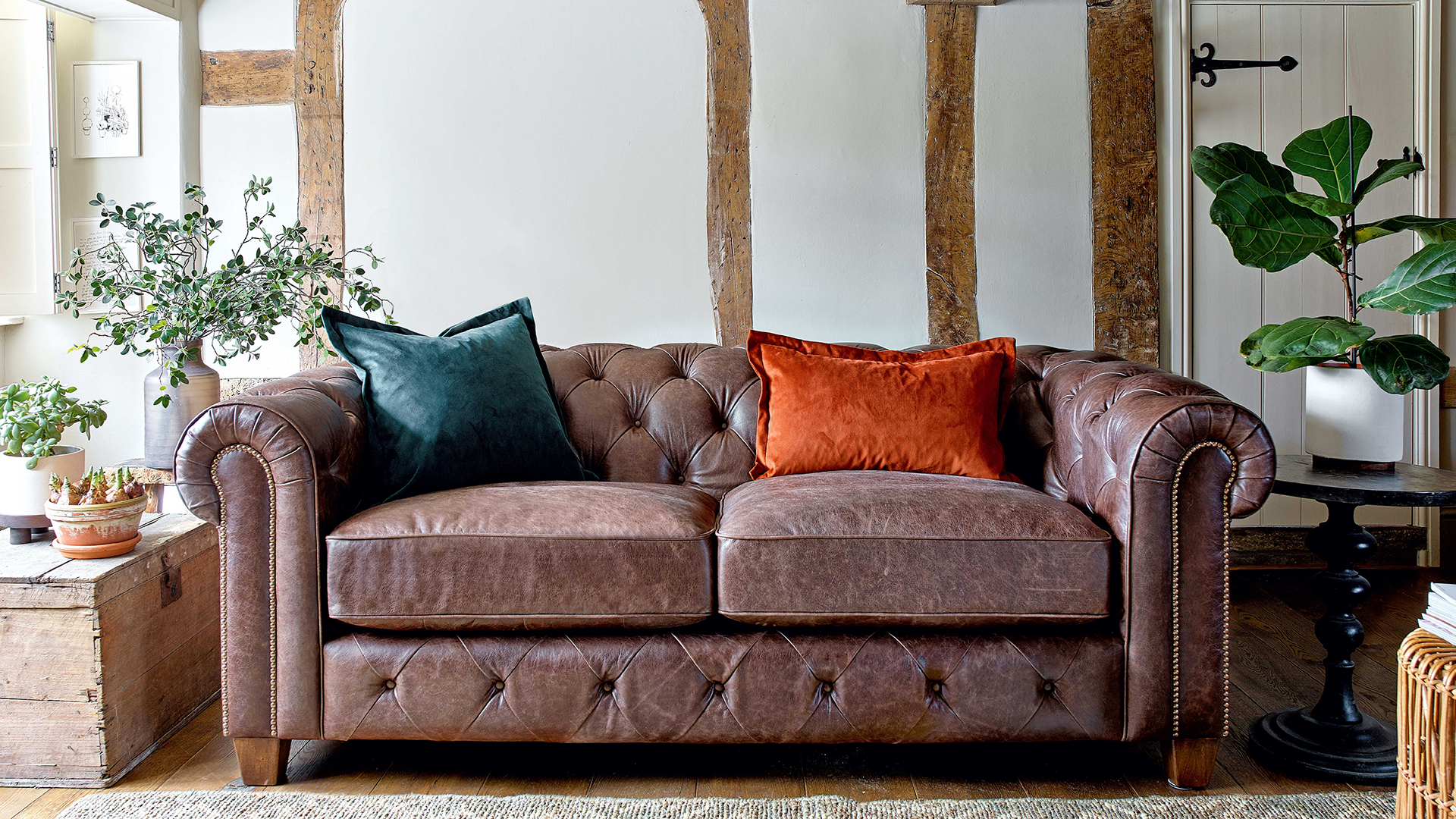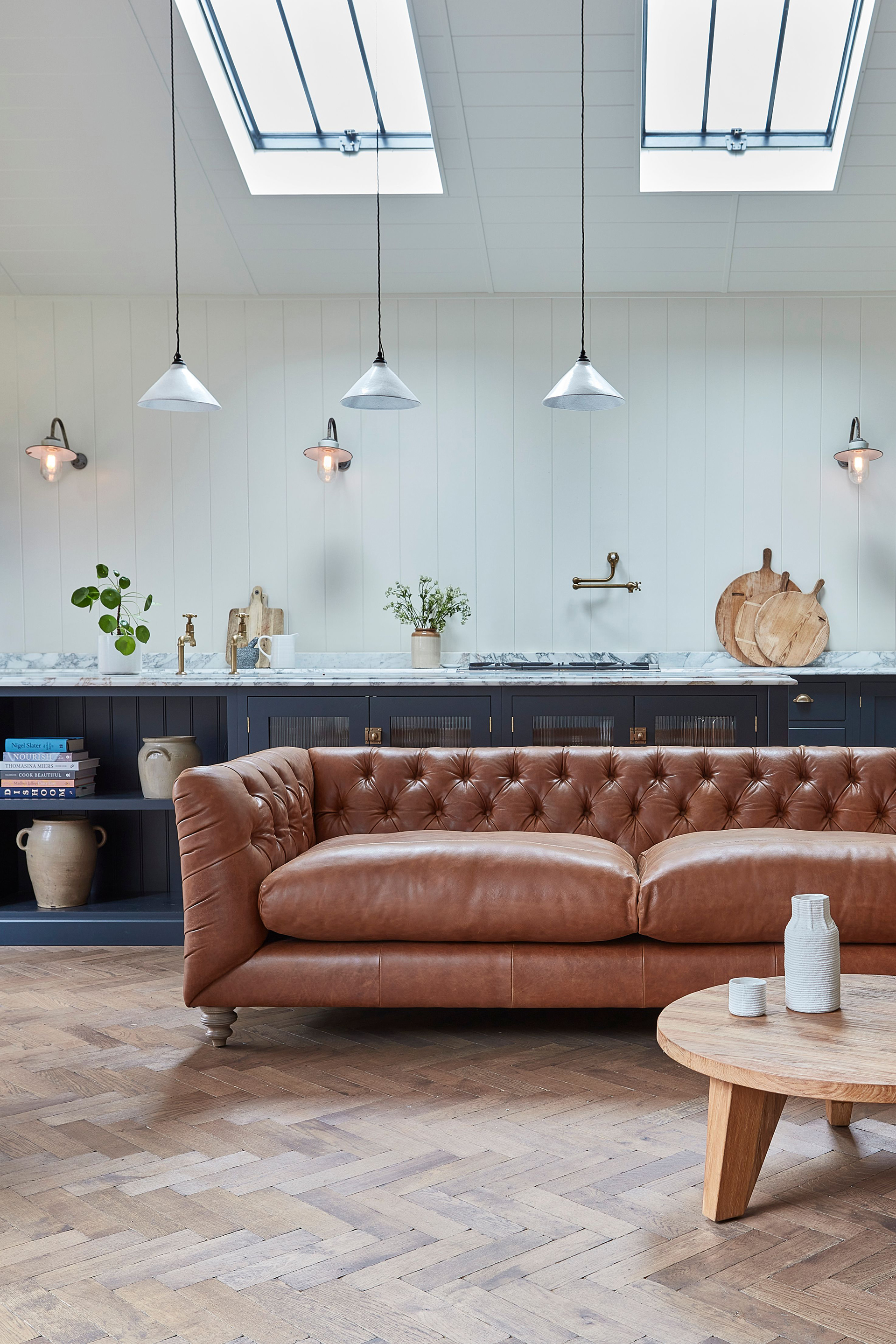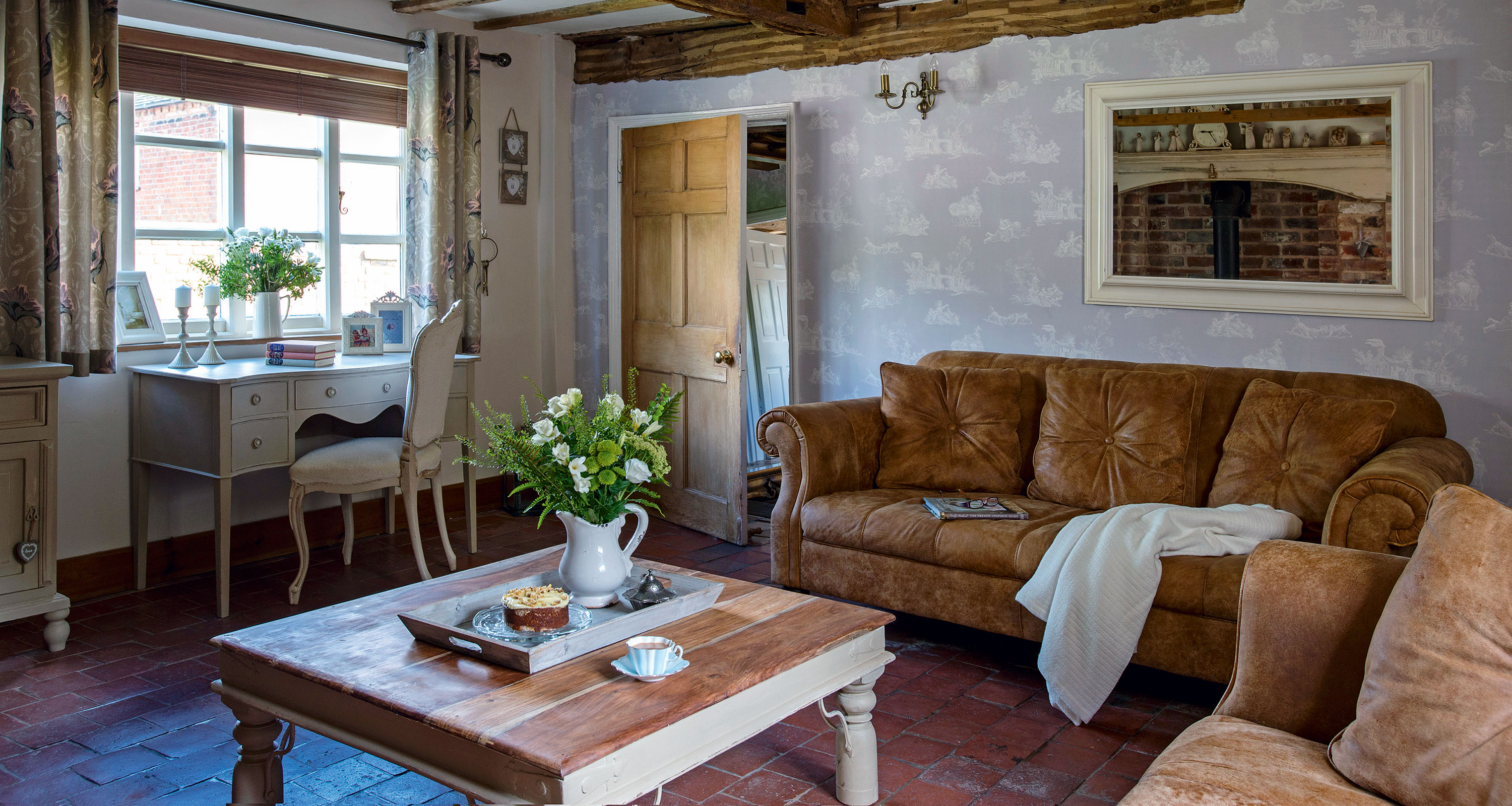How to repair a leather couch – and restore it to its best
Is your leather couch looking worse for wear? Find out how to restore it to its best with our expert advice


Knowing how to repair a leather couch is essential if you own one and have a busy family home – and especially pets who might sneak on it occasionally.
Due to its durability and longevity, leather is a firm favorite when it comes to upholstery. Leather also ages beautifully making it the perfect investment piece. A leather couch is always on trend and picking a neutral shade ensures it will always go with your scheme.
However, leather can be prone to damage – including scratches. We've asked the experts and collated their advice to ensure that you know how to keep your couch looking its absolute best.
See: How to clean a leather sofa – so that it looks as good as new
How do you repair a damaged leather couch?
'Although leather is pretty tough, it can of course be cut, torn or punctured. This can obviously be upsetting as leather is a fairly expensive fabric, and replacing damaged covers might be a significant expense. Fortunately, that is very rarely necessary as cuts and tears can usually be repaired at home with a little care and the right tools.' says John Darling, founder of luxury upholsterers Darlings of Chelsea.
However, before you embark on repair projects, it's important to establish the condition of the leather and the age of the couch. 'Just like tire wear on a vehicle, leather furniture can get worn down and sometimes degraded beyond the point of repair.' says Jesse Johnstone, president of Fibrenew
So can leather upholstery be repaired? Yes, leather upholstery can be repaired. Read on to find out how.
How can I restore my faded leather couch to color?

You can restore your faded leather couch by spot-touching specialist dyes and finishes, that are simply applied with a sponge and allowed to dry – it is very easy to do yourself, plus it's a lot more cost-effective than purchasing a new leather sofa.
Lesandre Holiday, CEO of Rub 'n' Restore says most touch-up projects 'only require a 2 to 8oz color (US$16 to $48) and 2 to 4oz clear finish (US$8 to $14). All genuine leathers are candidates, even lesser quality corrected grain. The exceptions are nubuck and suede.'
However, when it comes to spot-touching, the main challenge is matching the color. Lesandre advises picking a company with a color matching service, and while this does add to the cost, it ensures that your touch-ups will be hardly noticeable.
'We offer a service that requires sending a sample and may cost up to US$60 with an 8oz color minimum.'
How to soften old leather?
You can soften old leather by investing in a specialist conditioner – ideally one that contains lanolin – to keep the material supple.
'To protect your leather, using a specialist conditioner from a quality care kit will help to clean and condition your product, reviving the sheen of the leather and preserving its soft suppleness. To prevent the leather losing its rich color or from becoming dry, apply this conditioner twice a year,' says Suzy McMahon, buying director Sofology.
There are several DIY methods that include using petroleum jelly or coconut oil, but these have been shown to have mixed results and may stain your couch. It is worth selecting a specific leather conditioner to ensure that the product is compatible with leather couches and will achieve your desired effect.
Can you fix a leather couch that is peeling?

You can fix a peeling leather couch quite easily. However, genuine leather does not peel or flaking off. This is instead a clear indication that your couch is made of bonded or blended leather which is also known as faux leather. You can temporarily improve the look of your faux leather sofa with a filler and color but this will be a short term fix. It is worth considering replacing it with a genuine leather sofa which, while more expensive, will last a lot longer.
Genuine leather will crack rather than peel. 'This happens due to the desiccation of the fiber, as its natural oils evaporate,' says Lesandre Holiday. 'This causes the leather to shrink and stiffen and then become damaged with stress and use.' You can prevent this by using a conditioner which should be applied once or twice a year at most.
If it's already too late to prevent cracking, thankfully you can fix a cracked leather couch by using a filler. Rub 'n' Restore's water-based leather filler kit costs from $23 and is simply applied to cracks, then treated with a color to conceal them.
How do you repair a rip in a leather sofa?

You can repair a rip in a leather couch with super glue, a canvas or leather sub patch, some sandpaper and a sharp knife. You may also need some filler and a leather dye that matches your sofa. All of these items are available online or from DIY or home stores
'The basic process is to clean up the tear by carefully trimming it with a sharp blade, then place the patch underneath the tear and super glue both sides of the torn material to it, placing the edges of the tear together if possible so there is no gap,' says John Darling founder of luxury sofa manufacturer Darlings of Chelsea.
'In many cases, this is sufficient and, with a high-quality patch and good super glue, will hold firmly for the lifetime of the sofa and be almost invisible.'
If the patch or join is still visible, then push heavy leather filler into the gap, building it up into thin layers. You can then color the filler and the patched area to make sure it blends in. 'As always, it is best to test any dye you use on an inconspicuous area first to make sure it matches,' advises John.
If the damage is severe then DIY repair may not be possible and you should consult a professional. 'An expert upholster can remove the ripped panel and replace it with one cut from matched leather,' advises Greg Miller, leather technician from Blenkinsop Leathers Ltd.
'How cost effective using a professional would be is doubtful, especially with a lower budget sofa. The most economic option might be to simply replace it, though of course not the most environmentally-friendly.'
How do you repair a split seam on a leather couch?
When it comes to repairing a split seam on a leather couch, in most cases it is best to leave this to the professionals.
'Leather is thick and can be tough to stitch by hand. It requires special needles, threads, tools, and know-how in order to do it properly, have it match the rest of the couch, and ensure it holds up over time.' says Jesse Johnstone, president of Fibrenew 'Professionals will be able to match the seam to the same pattern as the rest of the couch and make sure that it will hold together.'
How much does it cost to repair a leather couch?
The cost of repairing a leather sofa will depend on the extent of the damage. If you are looking to repair a small area of cracking or a single scratch on a DIY basis then it can cost as little as $20 for a patch repair kit.
Be sure to fully research a product before committing as there are lots of budget options that can cause more damage than good. Magic Mender or Rub 'n' Restore both have lots of advice about finding the best DIY kit as well as offering personalized advice to help you with your specific problem.
See: How to restore wood furniture – an expert guide
For larger repairs, it is worth consulting a professional but this does come at a price. Larger professional repairs can cost between $500 and $1,200 – and in some cases it will cost less to replace the piece rather than repair so be sure to get a selection of quotes before you decide on whether to repair or replace.
Sign up to the Homes & Gardens newsletter
Design expertise in your inbox – from inspiring decorating ideas and beautiful celebrity homes to practical gardening advice and shopping round-ups.

Having graduated with a first class degree in English Literature, Holly started her career as a features writer and sub-editor at Period Living magazine, Homes & Gardens' sister title. Working on Period Living brought with it insight into the complexities of owning and caring for period homes, from interior decorating through to choosing the right windows and the challenges of extending. This has led to a passion for traditional interiors, particularly the country-look. Writing for the Homes & Gardens website as a content editor, alongside regular features for Period Living and Country Homes & Interiors magazines, has enabled her to broaden her writing to incorporate her interests in gardening, wildlife and nature.
-
 'It's a fast reset button' – using the 1, 2 ,3 ,4, 5 decluttering method cleared my persistent mess in seconds
'It's a fast reset button' – using the 1, 2 ,3 ,4, 5 decluttering method cleared my persistent mess in secondsIt's easy, effective and so quick to do
By Ottilie Blackhall Published
-
 Nectar vs Layla – which mattress brand is best on test?
Nectar vs Layla – which mattress brand is best on test?I've set the Nectar Premier Hybrid Mattress and the Layla Hybrid Mattress head to head to help you work out which mattress meets your needs
By Emilia Hitching Published